#science crab
Explore tagged Tumblr posts
Text

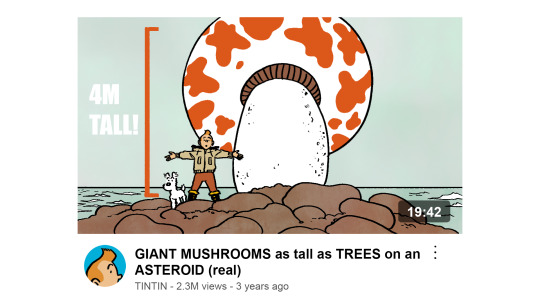

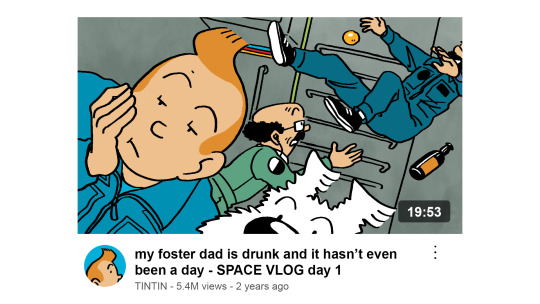
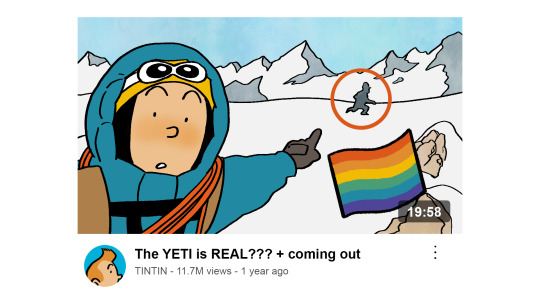
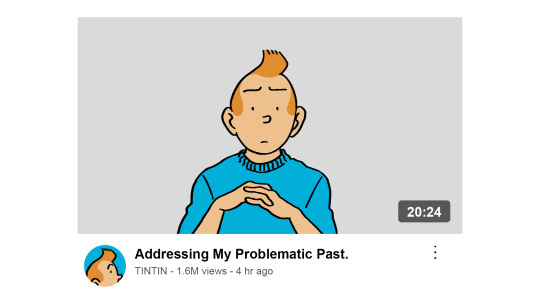
as newspapers today dont tend to hire children, a modern day Tintin would run a clickbait YouTube channel, except the clickbait is 100% real every single time
he starts off as an irritating conservative pundit at 14, meets Chang then leaves the think tank paying him and launches his own independent channel and blows up shortly after. Chang helps with video editing and managing his socials and they often chat on video calls between adventures. Haddock, his foster dad, has absolutely no knowledge of his earlier videos.
#tintin#adventures of tintin#fanart#photoset#modern au#snowy#milou#captain haddock#archibald haddock#professor calculus#cuthbert calculus#the crab with the golden claws#the shooting star#secret of the unicorn#explorers on the moon#tintin in tibet#youtube#tintin would get cancelled after someone films his dog drinking wine#alcohol#alcohol tw#calculus runs a science communication and engineering channel that's absolutely huge#but he never mentions it to the others#haddock only has a facebook
25K notes
·
View notes
Text

26K notes
·
View notes
Text

Peek-a-boo! Have you ever seen the granulate shellback crab (Hypoconcha arcuata)? Growing about 0.6 in (1.4 cm) long, this unusual-looking crustacean inhabits coastlines along parts of the western Atlantic, with a range that includes parts of the United States, Mexico, and Brazil. Unlike hermit crabs—which hide inside their chosen shells—this critter uses its posterior legs to secure shells onto its back, often shouldering pieces larger than its own body, as a defense against foes.
Photo: Austin Smith, CC BY 4.0, iNaturalist
#science#nature#natural history#animals#fact of the day#did you know#cool animals#marine biology#marine biodiversity#crabs#crustacean#fun facts#animal facts#ocean life
3K notes
·
View notes
Text
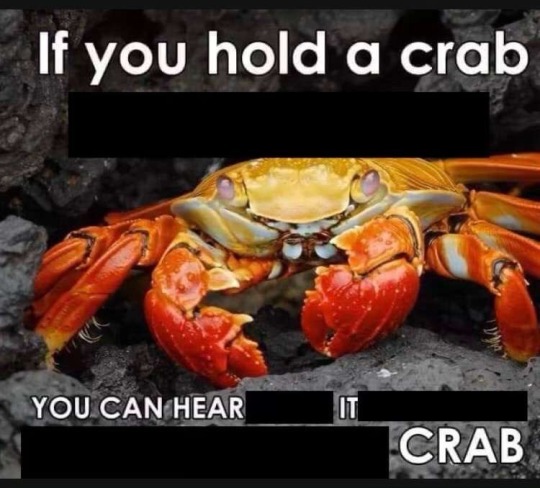
#sally lightfoot crab#crabs#crab#crustaceans#marine biology#aquarium#fish#sharks#oceanposting#deep sea#sea creatures#ocean#science#marine biology memes#fishblr#crab meme#sea life#memes
11K notes
·
View notes
Text
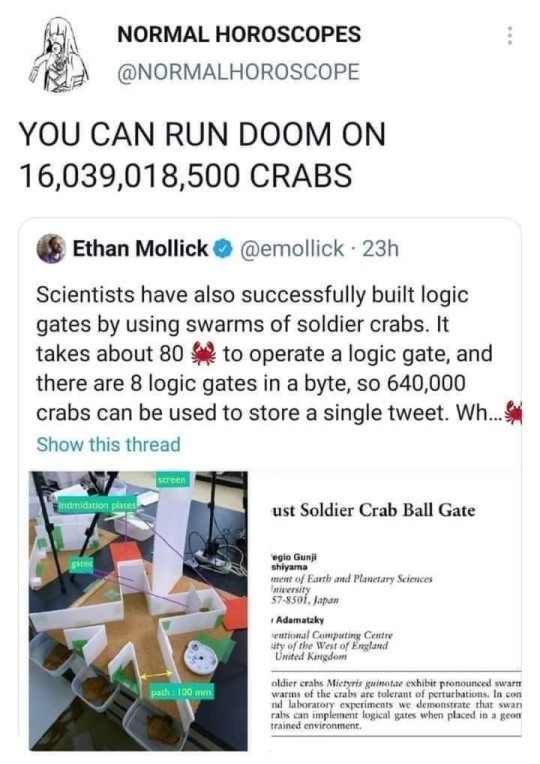
29K notes
·
View notes
Text
Mangrove crabs are by no means rare in Florida and I've photographed them before, but it's just pleasing to see mangrove crab snacking on actual mangrove. There's not much mangrove up in North Florida so it's a treat. 🤎

2K notes
·
View notes
Text
"Many people know about the Yellowstone wolf miracle. After wolves were reintroduced to the national park in the mid-1990s, streamside bushes that had been grazed to stubble by out-of-control elk populations started bouncing back. Streambank erosion decreased. Creatures such as songbirds that favor greenery along creeks returned. Nearby aspens flourished.
While there is debate about how much of this stemmed from the wolves shrinking the elk population and how much was a subtle shift in elk behavior, the overall change was dramatic. People were captivated by the idea that a single charismatic predator’s return could ripple through an entire ecosystem. The result was trumpeted in publications such as National Geographic.
But have you heard about the sea otters and the salt marshes? Probably not.
It turns out these sleek coastal mammals, hunted nearly to extinction for their plush pelts, can play a wolf-like role in rapidly disappearing salt marshes, according to new research. The findings highlight the transformative power of a top predator, and the potential ecosystem benefits from their return.
“It begs the question: In how many other ecosystems worldwide could the reintroduction of a former top predator yield similar benefits?” said Brian Silliman, a Duke University ecologist involved in the research.
The work focused on Elk Slough, a tidal estuary at the edge of California’s Monterey Bay. The salt marsh lining the slough’s banks has been shrinking for decades. Between 1956 and 2003, the area lost 50% of its salt marshes.
Such tidal marshes are critical to keeping shorelines from eroding into the sea, and they are in decline around the world. The damage is often blamed on a combination of human’s altering coastal water flows, rising seas and nutrient pollution that weakens the roots of marsh plants.
But in Elk Slough, a return of sea otters hinted that their earlier disappearance might have been a factor as well. As many as 300,000 sea otters once swam in the coastal waters of western North America, from Baja California north to the Aleutian Islands. But a fur trade begun by Europeans in the 1700s nearly wiped out the animals, reducing their numbers to just a few thousand by the early 1900s. Southern sea otters, which lived on the California coast, were thought to be extinct until a handful were found in the early 1900s.
In the late 1900s, conservation organizations and government agencies embarked on an effort to revive the southern sea otters, which remain protected under the Endangered Species Act. In Monterey Bay, the Monterey Bay Aquarium selected Elk Slough as a prime place to release orphaned young sea otters taken in by the aquarium.
As the otter numbers grew, the dynamics within the salt marsh changed. Between 2008 and 2018, erosion of tidal creeks in the estuary fell by around 70% as otter numbers recovered from just 11 animals to nearly 120 following a population crash tied to an intense El Niño climate cycle.
While suggestive, those results are hardly bulletproof evidence of a link between otters and erosion. Nor does it explain how that might work.
To get a more detailed picture, the researchers visited 5 small tidal creeks feeding into the main slough. At each one, they enclosed some of the marsh with fencing to keep out otters, while other spots were left open. Over three years, they monitored the diverging fates of the different patches.
The results showed that otter presence made a dramatic difference in the condition of the marsh. They also helped illuminate why this was happening. It comes down to the otters’ appetite for small burrowing crabs that live in the marsh.
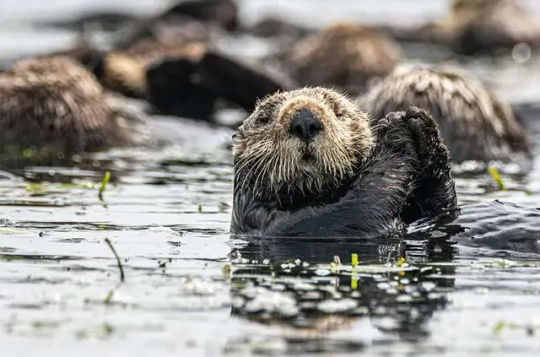
Adult otters need to eat around 25% of their body weight every day to endure the cold Pacific Ocean waters, the equivalent of 20 to 25 pounds. And crabs are one of their favorite meals. After three years, crab densities were 68% higher in fenced areas beyond the reach of otters. The number of crab burrows was also higher. At the same time, marsh grasses inside the fences fared worse, with 48% less mass of leaves and stems and 15% less root mass, a critical feature for capturing sediment that could otherwise wash away, the scientists reported in late January in Nature.
The results point to the crabs as a culprit in the decline of the marshes, as they excavate their holes and feed on the plant roots. It also shows the returning otters’ potential as a marsh savior, even in the face of rising sea levels and continued pollution. In tidal creeks with high numbers of otters, creek erosion was just 5 centimeters per year, 69% lower than in creeks with fewer otters and a far cry from earlier erosion of as much as 30 centimeters per year.
“The return of the sea otters didn’t reverse the losses, but it did slow them to a point that these systems could restabilize despite all the other pressures they are subject to,” said Brent Hughes, a biology professor at Sonoma State University and former postdoctoral researcher in Silliman’s Duke lab.
The findings raise the question of whether other coastal ecosystems might benefit from a return of top predators. The scientists note that a number of these places were once filled with such toothy creatures as bears, crocodiles, sharks, wolves, lions and dolphins. Sea otters are still largely absent along much of the West Coast.
As people wrestle to hold back the seas and revive their ailing coasts, a predator revival could offer relatively cheap and effective assistance. “It would cost millions of dollars for humans to rebuild these creek banks and restore these marshes,” Silliman said of Elk Slough. “The sea otters are stabilizing them for free in exchange for an all-you-can-eat crab feast.”"
-via Anthropocene Magazine, February 7, 2024
#otters#sea otters#conservation#erosion#coastal erosion#coastline#marshes#saltwater#marine science#marine biology#marine animals#sea creatures#ocean#sustainability#soil erosion#erosion control#crab#good news#hope
3K notes
·
View notes
Text
Going into 2024 like… 🦀 🖤 😞
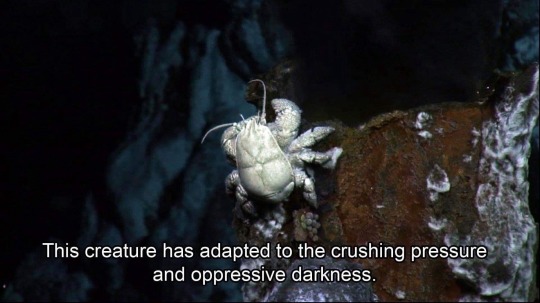
#crabs#feminism#you go girl#yeti crab#marine science#ocean#happy new year#love to sea it#marine memes#ocean meme#crab meme#marine biology#new years eve#sea creatures#crustacean#ocean life#oceanposting#marine life#ocean creatures#new years#sea animals#marine critters#aquatic life#sea life#sea critters#marine creatures#crab#deep sea
3K notes
·
View notes
Text
Okay, I know people as a general rule tend to not care about invertebrates as much as cute, fuzzy mammals, but this is a must-read if you care about animal welfare. The short version is that horseshoe crab blood has been used for decades in medicine as a way to test whether something is truly sterile; the blood clots in the presence of bacteria. Since then millions of horseshoe crabs have been captured and drained of blood, even though a synthetic alternative was developed a few years ago.
They go through a pretty brutal experience in the process. They're caught by fishermen who often throw them by their tails into a pile in the open air, and they're then trucked to a bleeding facility where they're strapped down and their blood is removed with needles jabbed directly into their hearts. Over half their blood may be taken, after which they're supposed to be returned to the ocean. However, it's likely many of them never make it back, instead turned into fish bait and sold by the same fishermen who caught them in the first place.
Apart from the fact that this is a horrific thing to put any animal through, the attrition due to fatalities has put a serious dent in horseshoe crab numbers. This is compounded by massive habitat loss, pollution, and the capture of horseshoe crabs as food, particularly as the females of one species are considered a delicacy. And other animals that rely on horseshoe crabs are suffering, too. The American rufa subspecies of the red knot, a medium-sized shorebird, is critically endangered as the horseshoe crab eggs it must have in order to successfully complete migration have become increasingly scarce, and it is likely the bird will become extinct if trends continue.
While there are guidelines for medical horseshoe crab harvest, they're considered optional. The few laws that exist are poorly enforced. Short of a complete ban on horseshoe crab blood in favor of the synthetic alternative, these animals are in very real danger of going extinct after a history spanning over 400 million years on this planet.
Thankfully, this article is not the first to bring forth the issues surrounding horseshoe crab harvest. Here are a few resources for further information and action (US based, though horseshoe crabs are threatened throughout their entire range):
Horseshoe Crab Conservation Network - https://horseshoecrab.org/conservation/
Wetlands Institute - https://wetlandsinstitute.org/conservation/horseshoe-crab-conservation/
Horseshoe Crab Recovery Coalition - https://hscrabrecovery.org/
#animal welfare#animal cruelty#cw animal cruelty#animal suffering#horseshoe crabs#invertebrates#wildlife#animals#environment#conservation#endangered species#extinction#nature#medicine#science#scicomm#science communication
8K notes
·
View notes
Text

2K notes
·
View notes
Photo


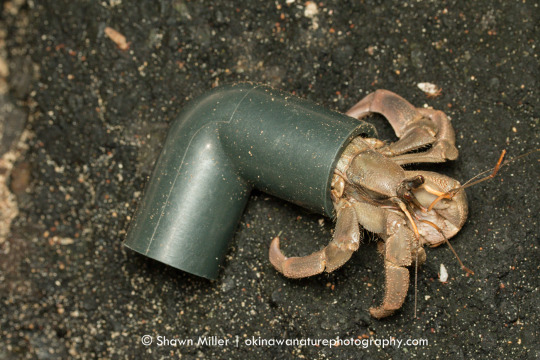
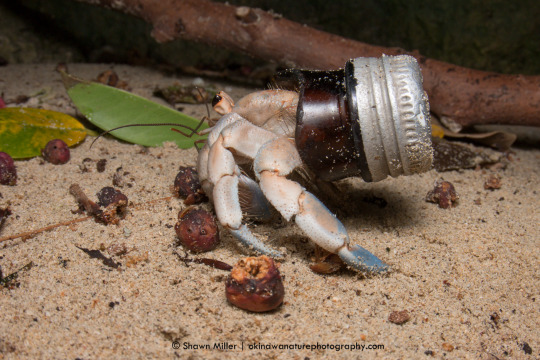

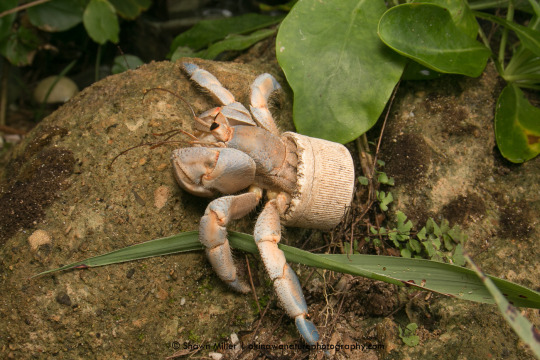

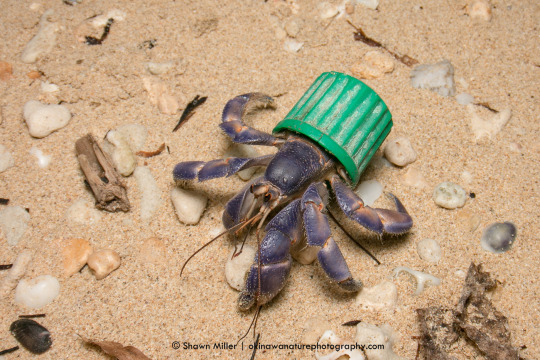
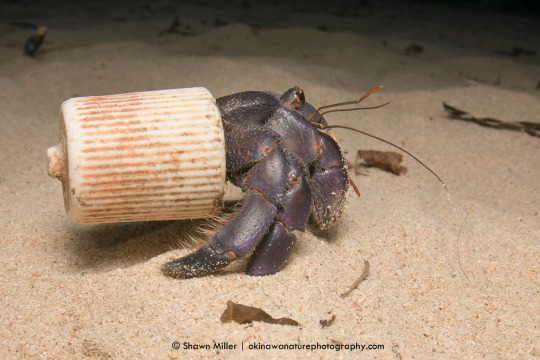
(May 12, 2023) We are raising money for a crowd funded research project investigating the cause of blueberry hermit crabs in Okinawa, Japan using trash found on the beach as “homes” instead of natural shells. These hermit crabs are endemic to the southern islands of Japan, and they act as coastal environmental engineers. They are endangered on several islands, and we want to try and understand why they are resorting to beach trash for shells. Please consider sharing this post and donating to the project. The fundraising will be active for the next 45 days (until June 26).
You can find all project details here: https://experiment.com/projects/blueberry-hermit-crabs-with-beach-trash-homes
We suspect that areas with high rates of tourism lead to beach combers collecting natural shells leaving nothing for the hermit crabs to use. It’s possible that overfishing of turbo snails which would naturally provide shells for the crabs may also be a factor. We will survey many sites across several islands in Okinawa to try and determine a cause of this behavior.
We will be working closely with national geographic photographer Shawn Miller (photo credits above) and several researchers in Japan. Additionally, we will complete extensive beach clean ups in the areas we study. Thank you so much for reading!
#conservation#hermit crabs#ecology#biology#research#beach combers#plastic waste#save our shells#make the switch for nature#national geographic#shawn miller#beach trash#beach clean ups#blueberry hermit crab#science experiments#marine science#marine biology#activism#nature#beach#travel#environment
7K notes
·
View notes
Text

Crab Nebula
755 notes
·
View notes
Text
it's science

can't argue with the facts

7K notes
·
View notes
Text

Which crab’s pinch is strong enough to rival a lion’s bite? That would be the coconut crab (Birgus latro). Charles Darwin once described it as growing to “a monstrous size.” This gargantuan crustacean can measure 3 ft (1 m) from leg tip to leg tip and weigh up to 8 lbs (4 kg). A member of the hermit crab family, it uses its powerful claws to crack open coconuts. This species inhabits coasts off of the Indo-Pacific Ocean.
Photo: luca63, CC BY-NC 4.0, iNaturalist
#science#nature#natural history#animals#fact of the day#did you know#cool animals#coconut crab#crabs#crustacean
1K notes
·
View notes
Text
Imagine, if you will, the not too distant future. A future where a man no different than you or me could have his life changed in an instant due to someone else’s own malice. This man will be put through the most grueling mental torture imaginable in a place where no other person could ever reach him: space. This seemingly insignificant man would become so isolated and lonely by the vastness of space that he creates life itself in an attempt to give him companionship. If you dare to wonder how he eats, breathes, or other scientific facts, we must travel along with him into the darkest depths… of The Twilight Zone.

#yes this is about mst3k#yes i have been watching the twilight zone#yes i think they could be one in the same#mst3k#mystery science theater 3000#keep circulating the crabs
558 notes
·
View notes
Text


crab
339 notes
·
View notes